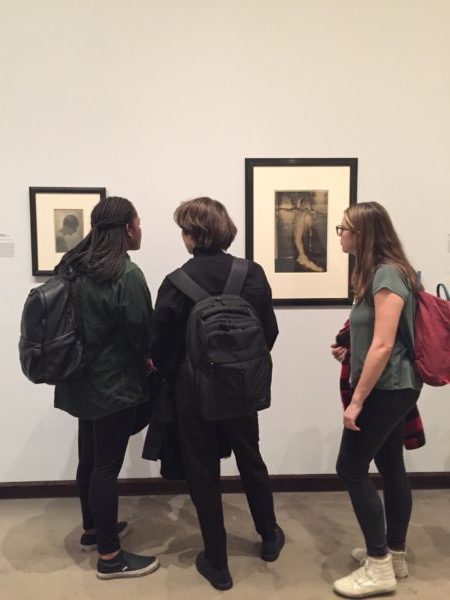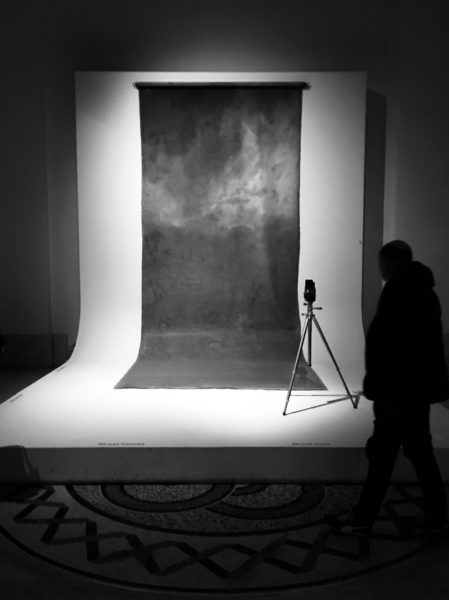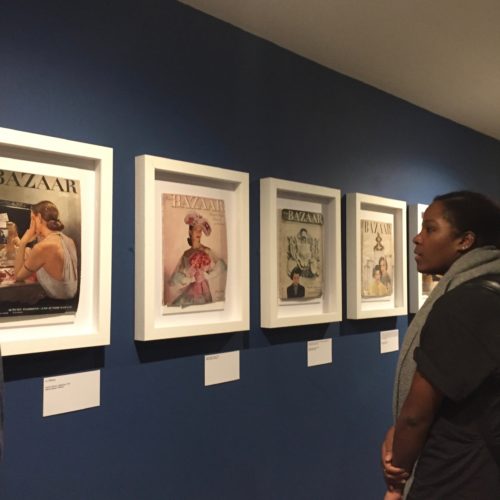In our next installment of the MA Documenting Fashion NYC trip recap we take on the Metropolitan Museum of Art, specifically a small gallery tucked away by the nineteenth-century sculpture featuring the photographs of Baron Adolph de Meyer in Quicksilver Brilliance, a solo exhibition of his work. The exhibition utilizes the Met’s own holdings of de Meyer’s photographs to create an overview of de Meyer’s career.
As a pioneer of fashion photography, de Meyer’s distinctive Pictorialist approach helped define the genre during the interwar period at leading fashion magazines. Thus, the inclusion of one of de Meyer’s tuxedos is an appropriate addition to the exhibition. The presentation of a pristine 1930s black wool tuxedo which likely comes from Wolf Kahan, a tailor who catered to the artists of Vienna, sets a tone of elegance for the exhibition. De Meyer, a member of the “international set” that defined high society in fin-de-siècle Europe, was considered a beacon of style, writing columns for Harper’s Bazaar and Vogue instructing American women on the latest European fashions.

The first photograph in the exhibition that caught my attention was The Silver Cap which as its title suggests, highlights the headwear of de Meyer’s model. The 1909 photograph seems to glitter on its own like an early twentieth-century version of the Kira-Kira app. Indeed, de Meyer was a master of manipulating light, combining a soft focus and a dramatic use of electric light to create a “quicksilver brilliance.” Here, de Meyer’s manipulated lighting captures the texture and luminosity of the fabric to illustrate in the photograph the quality of the textile as if it were in motion.

My other favorite photograph in Quicksilver Brilliance is a 1917 portrait of Rita de Acosta Lydig where de Meyer captures the socialite and suffragette in striking simplicity. I adore the way in which de Meyer renders the subtle contours of his subject’s body and illuminates the confident character of Rita without showing much of her face. To me, the image, which appeared in Vogue, relates the sensual beauty of the female subject and represents a style of photography and posing that dominates fashion photography to this day.
Quicksilver Brilliance presents a charming selection of prints which epitomize de Meyer’s career and highlight the elegant origins of fashion photography. The exhibition is on at the Met until April 8th.
By Abby Fogle



















 It’s the first class of my MA
It’s the first class of my MA 




